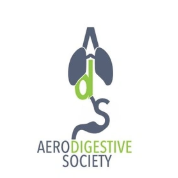Aerodigestive programs manage a wide range of conditions that affect breathing, swallowing, feeding, and related functions. These are often complex conditions that involve more than one body system (airway, lungs, and digestive tract). Below is a list of common conditions treated, grouped by category:
• Airway and Voice Disorders: Problems that affect the upper airway (throat and voice box) or windpipe. Examples include laryngomalacia (a floppy airway tissue that can cause noisy breathing in infants), subglottic stenosis(narrowing of the airway below the vocal cords, which can cause breathing difficulty), vocal cord paralysis (one or both vocal cords don’t move properly, affecting voice and breathing), laryngeal cleft (an abnormal opening between the airway and esophagus that can lead to aspiration), and tracheomalacia (weakness of the trachea, causing it to collapse and lead to breathing issues). Children with these conditions may have stridor (a high-pitched breathing noise), recurrent croup, or voice abnormalities. These airway issues are often congenital (present from birth) or result from injury or prolonged intubation.
• Lung and Respiratory Conditions: Issues involving the lower airway and lungs, especially when they overlap with airway or swallowing problems. Examples include chronic aspiration (inhaling food, liquids, or stomach acid into the lungs, often due to swallowing difficulties or reflux), recurrent pneumonia or chronic respiratory infections (which can be a consequence of aspiration or an unresolved airway problem), bronchiectasis (damage and widening of the airways from repeated infection or inflammation), obstructive sleep apnea (breathing stops or diminishes during sleep due to airway obstruction, which often overlaps with ENT issues like large adenoids/tonsils), and tracheostomy dependence (children who have a tracheostomy tube and need a plan for airway reconstruction or decannulation). These conditions often require both pulmonary management (like respiratory therapy) and attention to any feeding/reflux issues that might be contributing.
• Feeding and Swallowing Disorders: Conditions that make it hard for a child to eat or swallow safely. This includes dysphagia (difficulty swallowing) which might cause coughing or choking during meals, feeding aversion or oral aversion (a child refuses or is afraid to eat due to negative experiences or developmental issues), and failure to thrive/malnutrition related to feeding difficulties. Many children in aerodigestive clinics have had feeding tubesplaced (NG-tubes or G-tubes) because they cannot take enough by mouth. A common condition is aspiration during feeding, where liquids or foods slip into the airway; this can happen due to incoordination or due to structural issues like a laryngeal cleft. Neurologic conditions (like cerebral palsy) can also cause feeding and swallowing problems that the aerodigestive team helps manage.
• Gastrointestinal Disorders related to Airway: Digestive tract problems that impact breathing or swallowing. A prime example is gastroesophageal reflux disease (GERD), where stomach acid flows back into the esophagus and sometimes up to the throat, causing irritation and increasing the risk of aspiration into the lungs. Severe reflux can worsen asthma or chronic cough. Another condition is eosinophilic esophagitis (EoE), an allergic inflammation of the esophagus that can cause feeding refusal, vomiting, or swallowing pain – EoE can coexist with respiratory issues and needs to be diagnosed (via endoscopy/biopsy) and treated. Esophageal stricture (narrowing of the esophagus from scarring or birth defect) and tracheoesophageal fistula (TEF) or esophageal atresia (birth defects connecting or interrupting the esophagus and trachea) are complex GI issues that aerodigestive teams often follow, even after surgical repair, because they can have long-term effects on breathing and swallowing .
This is not an exhaustive list, but it covers many of the common diagnoses in an aerodigestive clinic. Often, children in the program have more than one of these conditions simultaneously (for example, a child might have subglottic stenosis and aspiration from dysphagia). The aerodigestive approach is particularly suited for such cases because the team addresses all contributing factors. If your child has any combination of breathing trouble, swallowing difficulty, and feeding problems – especially if these have been hard to diagnose or treat – an aerodigestive program is equipped to help.
